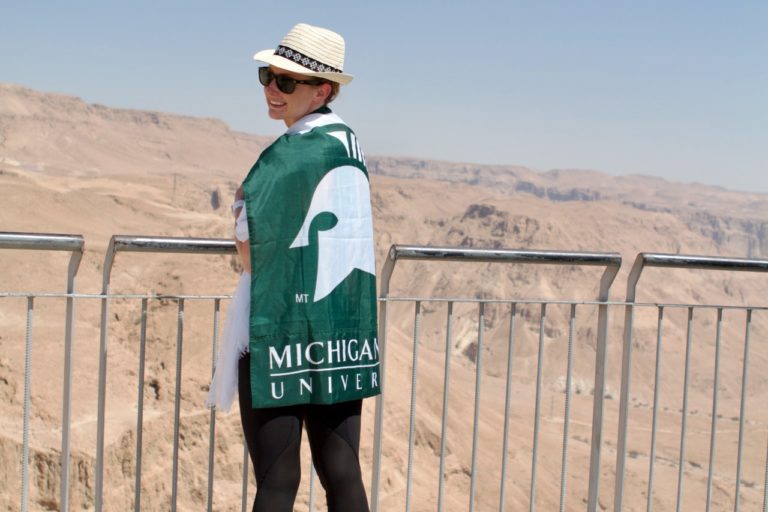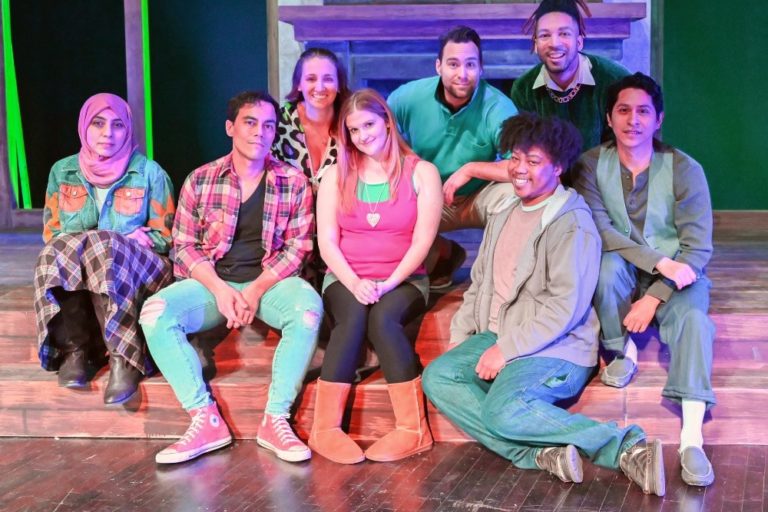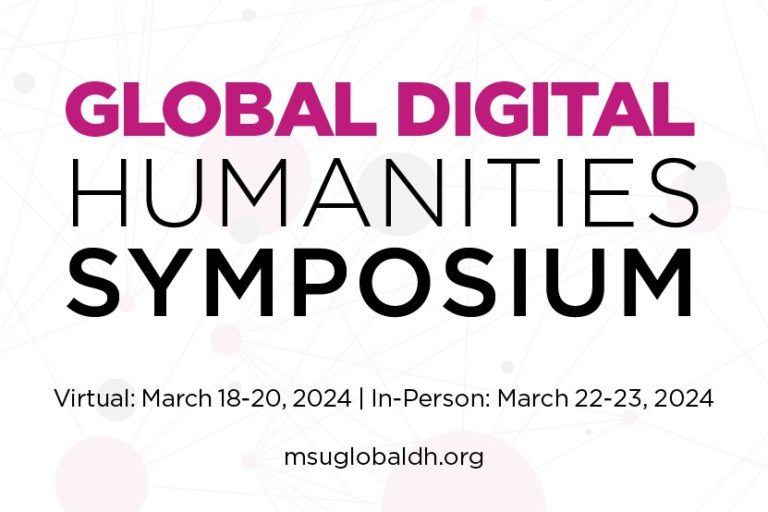Dear College of Arts & Letters Staff and Faculty,
With intention and care, we in the College of Arts & Letters (CAL) are beginning to emerge from what has been a somber and trying time. As we plan for a structured, staggered return to campus as outlined in President Stanley’s e-mail of June 8, 2021, it is important to recognize that the lasting impact of the pandemic continues for many – for those who have lost loved ones, who have experienced financial loss, who continue to have health and wellness challenges, whose children cannot yet be vaccinated, who struggle to find caregiving support, and whose friends and relatives live overseas with little vaccine access.
Results of This Past Year
Over the past 14 months, how we work and the nature of the work we do have been rapidly transformed. Faculty and academic specialists have long had a more flexible workplace model throughout the year. Many of the support staff found their working conditions and environment utterly changed in similar ways as well. The results from the College’s Future of Work survey from May 7, 2021, indicated a clear preference for continued access to more flexible work opportunities. A total of 228 College faculty, staff, and graduate students participated in the survey. Of the respondents, 61% believe they would seek a new balance between remote and in-person work in the future; 22% wish to stay remote as much as possible; and 17% wish to be in-person. The data summary will be sent out to College staff and faculty next week.
Clearly, this past year will have lasting implications for the way that we work together. In our email from May 21, entitled “Return to Campus Pre-Planning,” we emphasized the unique opportunity to reset the future of work. In doing so, it is important to ask the following questions as a guide this coming year:
- How can we reimagine the structures of work through the lens of our values of equity, openness, and community? How do we practice inclusion as a matter of habit?
- How will we ensure that we remain true to our four principles we made in our original 2020 Contingency Planning document?
- Protect the health and safety and put people first
- Enact our commitment to equity
- Advance our core academic mission
- Lead transformative change
- In the contexts of the values and parameters above, what work is best done in person, hybrid, remotely? Refer to the Workplace Decisions Guidance for Units and Supervisors as one possible evaluation framework.
- When asking these initial questions, we also ask how we can better share information and expand opportunities via each of these modalities?
- Are there distinct advantages or methods to enhance face-to-face interactions (e.g., enhance community building/networking, benefits of active/high-impact meetings and learning, reimagined interactive meeting spaces)?
- When would hybrid options work best (e.g., which meetings or classes in-person and which virtual, which work from home and which on-campus)?
- When is all remote a better option (e.g., greater inclusion/accessibility, better medical need/disability access, distance networking/sharing information)?
- Finally, how do we best enact a culture of care as we return? How will we return with patience and care for others and for ourselves?
Recommendations for Returning to Campus This Fall
Aligned with the University, the College will recommend a very gradual, phased return to campus over the summer with all units being fully functional by August 15, 2021. President Stanley’s e-mail of June 8, 2021 outlined new health and safety procedures for vaccinated faculty, staff, students, and guests beginning June 9. MSU Human Resources also provided new guidance on June 8, 2021, in their communication Returning to On-Site Work as a guide to a phased return.
As a College, we remain committed to the following guidelines for return-to-campus planning that also align with University guidelines:
- All employees who have been working remotely should continue doing so until told otherwise by their supervisor. All employees must be given a minimum 4-week notice before there is a change to work schedule or location. Regular communication is essential in these matters.
- It is expected that employees who have student-, faculty- or public-facing roles will be returning, in some capacity and to some degree, to in-person positions.
- Unit leaders will have the flexibility with their units to determine how their teams work best (in-person, remotely, or hybrid), keeping equity in mind.
- Before returning to work, each unit is encouraged to have a Framework for Returning Administrative Units to Campus for internal use. Since the College already has an approved framework for returning from last fall, we do not need to resubmit an updated one for fall 2021. All unit leaders are responsible for ensuring that any returning employees have taken the COVID-19 Safe Return Training, if they have not already done so, and adhere to the MSU Community Compact.
- As we plan for more in-person work, face coverings, health screening forms, and other mitigation strategies (such as physical distancing) still are required by MIOSHA emergency rules and will continue until updated. Until further notice, all employees must fill out the faculty/staff health screening form available on the Together We Will site.
- We plan to phase in returning to locations to minimize the impact on the workloads of IPF, IT, and other staff members in support roles. When planning, consider some of the following phase options that are described in more detail in the attached support staff-oriented document “Workplace Decision Guidance for Units and Supervisors,” particularly the options outlined on page 4. These include ideas for:
- Hybrid work schedules
- Flexible work schedules
- Staggered work schedules
- Alternating work schedules
- It is recommended that any faculty member or academic specialist who needs to continue to work remotely from another state or out-of-country consult with their chairperson or director to draw up a memorandum of understanding for this coming semester in the short-term to clarify expectations in advance of the annual review process. Support staff should communicate with their supervisor. No permanent hybrid/remote workplace arrangements should be made at this time.
- Provide onboarding for new employees who may be arriving at the workplace for the first time.
- As needed, contact Infrastructure, Planning & Facilities (IPF), Information Technology Services (ITS), Parking Services, University Procurement and Logistics, and MSU Human Resources to update information and services. Refer to the Returning to On-Site Work e-mail from HR for more information and see also the IPF site, Welcome Back We Have Campus Ready For You.
- Additional health and safety information will be forthcoming over the summer and as state and CDC guidelines are updated.
Long-Term Guidelines for Working Together
Currently, MSU Human Resources maintains a Flexible Scheduling Guidelines page that includes a Telecommuting Guide and Agreement that can be used as a resource for both faculty and staff in the short term. The MSU Remote Workplace Initiative, which focuses on support staff in the workplace, will be updating this page and the telecommuting agreement over the summer for longer-term staff use. Remote work whether regional, out-of-state, or out-of-country has logistical, legal, and financial implications (incl. health insurance and tax returns). More detailed information on these topics will also be coming out over the summer to help with individual decision and unit and College policy making.
This coming fall, departments, programs, and centers will have values-based conversations on the topic of faculty and academic specialist presence on campus. Support staff will also have similar values-based discussions as a whole and in their functional teams. Our approach to the future of work will be an important component of the College’s strategic planning process this year. These conversations will result in the formulation of guidelines and policies to be used in units going forward.
We are grateful for the flexibility and resilience you have all demonstrated during this difficult period. Please don’t hesitate to reach out to your Chair, Director, or any member of the College leadership team if you have any questions or concerns.
Please be well, stay safe, and take care.
Sincerely,
Christopher Long
Dean
Cara Cilano
Associate Dean for Undergraduate Studies
Ken Desloover
Chief of Staff
Sonja Fritzsche
Associate Dean for Academic Personnel and Administration
Bill Hart-Davidson
Associate Dean for Research and Graduate Studies
Scott Schopieray
Assistant Dean for Academic and Research Technology


